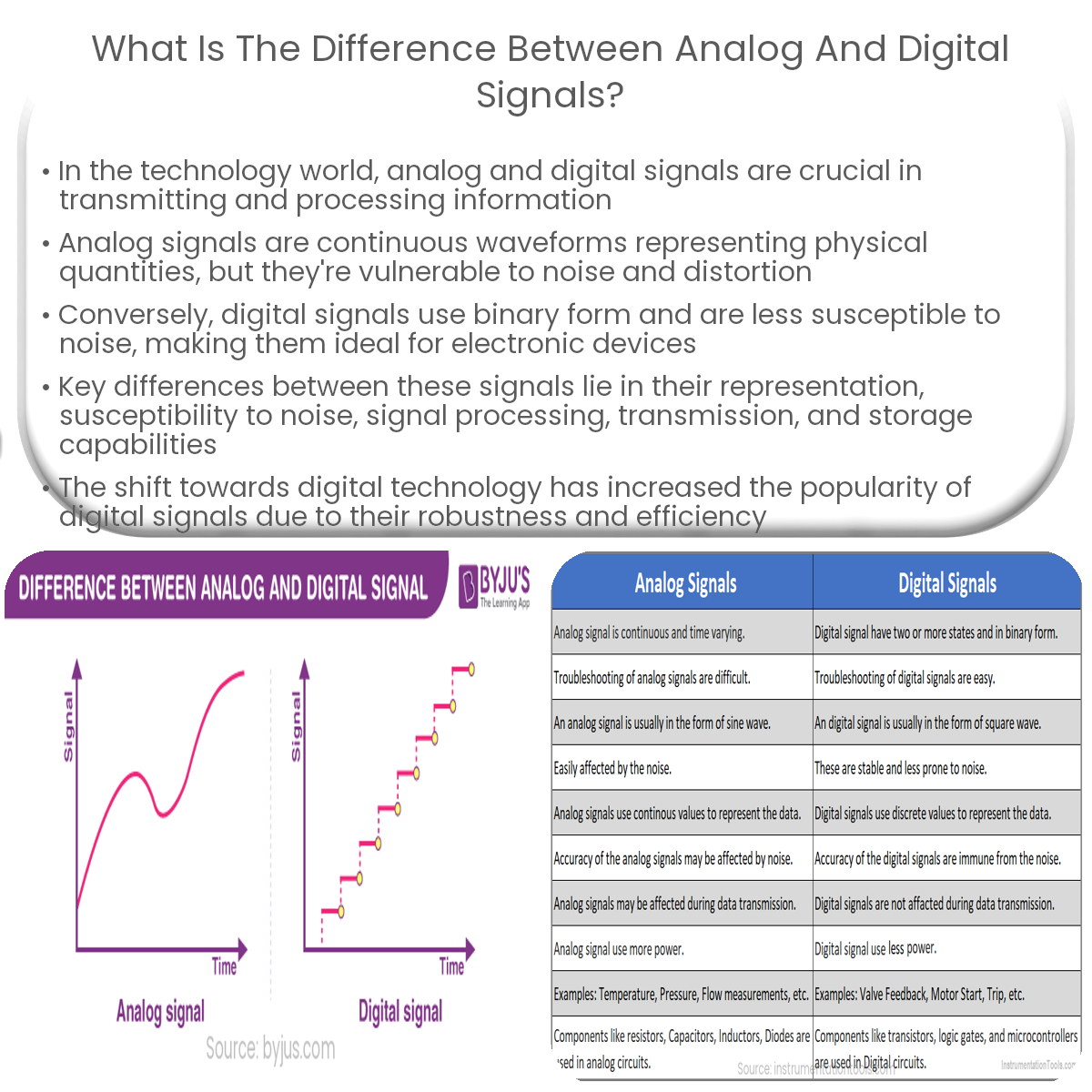Analog signals are continuous waveforms representing physical quantities, while digital signals are discrete binary codes less prone to noise.
Understanding Analog and Digital Signals
In today’s technology-driven world, signals play an essential role in the transmission and processing of information. Signals can be classified into two categories: analog and digital. In this article, we will explore the differences between these two types of signals and their applications.
Analog Signals
Analog signals are continuous waveforms that vary over time and represent a physical quantity. They can take on any value within a specified range. Examples of analog signals include sound waves, light waves, and the variations in temperature or pressure. Since analog signals are continuous, they are highly susceptible to noise and distortion, which can impact the quality of the transmitted information.
Digital Signals
Unlike analog signals, digital signals are discrete, meaning they represent information in binary form. They consist of a series of bits (0s and 1s) that correspond to specific voltage levels. Digital signals can only take on a limited number of values, typically represented by two states: high (1) and low (0). As a result, digital signals are less prone to noise and distortion, making them ideal for electronic devices and computer systems.
Key Differences Between Analog and Digital Signals
- Representation: Analog signals represent physical quantities through continuous waveforms, while digital signals use binary code to represent information.
- Noise Susceptibility: Analog signals are more vulnerable to noise and distortion, whereas digital signals are more robust and maintain their quality during transmission.
- Signal Processing: Analog signal processing involves modifying the continuous waveforms directly, while digital signal processing manipulates the binary data using algorithms.
- Transmission: Digital signals can be transmitted more efficiently and over longer distances than analog signals due to their resistance to noise and distortion.
- Storage: Digital signals can be easily stored and reproduced, whereas analog signals degrade over time and are prone to loss of information.
Applications of Analog and Digital Signals
Both analog and digital signals have their respective applications in various industries. Analog signals are commonly used in older technologies such as vinyl records, tape recorders, and traditional radio systems. However, the advent of digital technology has seen a shift towards digital signals in applications such as computer systems, telecommunications, digital audio and video, and modern control systems.
Conclusion
In summary, analog and digital signals differ in their representation, noise susceptibility, signal processing, transmission, and storage capabilities. While analog signals have been historically prevalent, digital signals have become increasingly popular due to their robustness and efficiency in modern electronic devices and systems.


